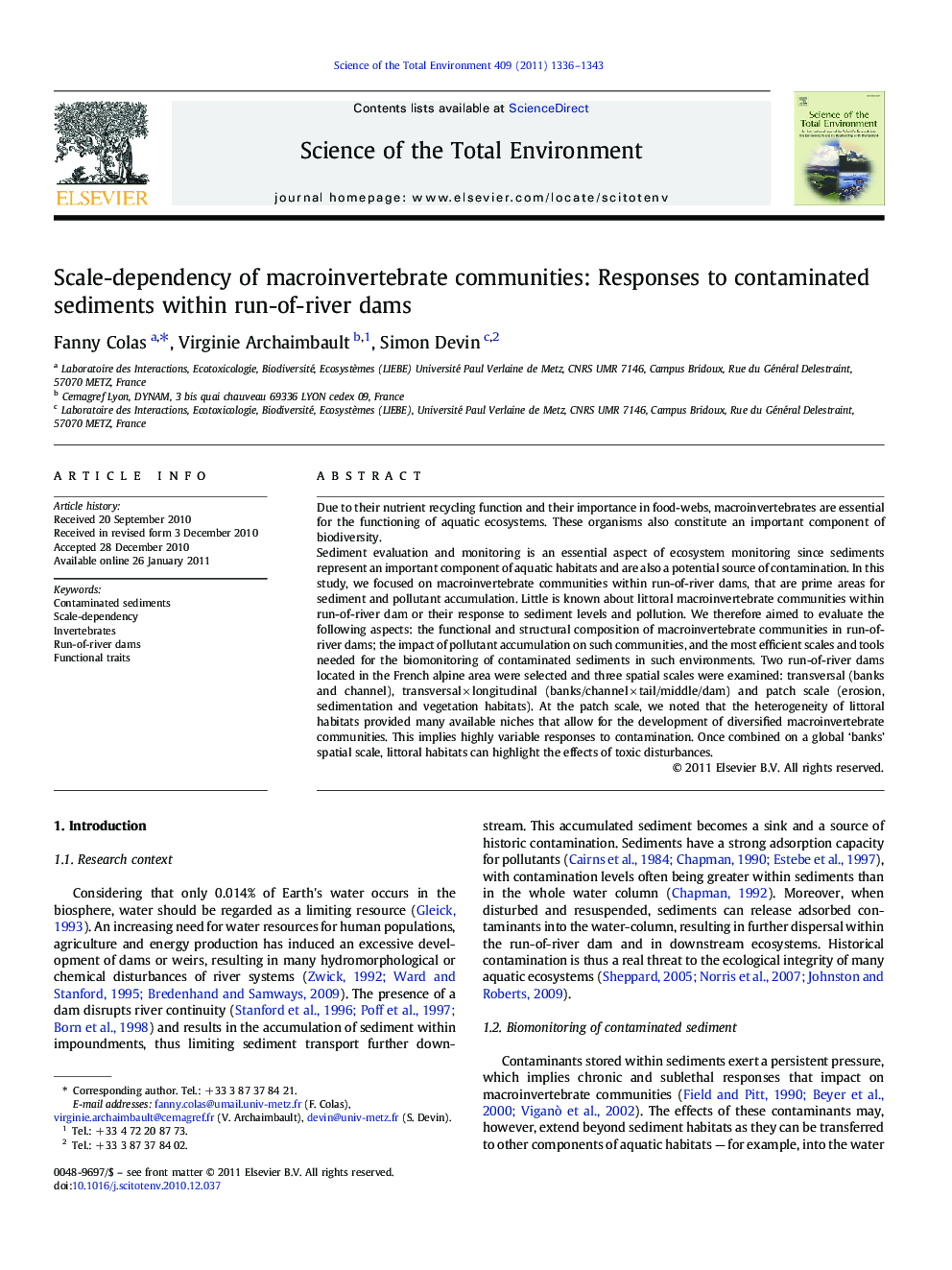| Article ID | Journal | Published Year | Pages | File Type |
|---|---|---|---|---|
| 4431093 | Science of The Total Environment | 2011 | 8 Pages |
Due to their nutrient recycling function and their importance in food-webs, macroinvertebrates are essential for the functioning of aquatic ecosystems. These organisms also constitute an important component of biodiversity.Sediment evaluation and monitoring is an essential aspect of ecosystem monitoring since sediments represent an important component of aquatic habitats and are also a potential source of contamination. In this study, we focused on macroinvertebrate communities within run-of-river dams, that are prime areas for sediment and pollutant accumulation. Little is known about littoral macroinvertebrate communities within run-of-river dam or their response to sediment levels and pollution. We therefore aimed to evaluate the following aspects: the functional and structural composition of macroinvertebrate communities in run-of-river dams; the impact of pollutant accumulation on such communities, and the most efficient scales and tools needed for the biomonitoring of contaminated sediments in such environments. Two run-of-river dams located in the French alpine area were selected and three spatial scales were examined: transversal (banks and channel), transversal × longitudinal (banks/channel × tail/middle/dam) and patch scale (erosion, sedimentation and vegetation habitats). At the patch scale, we noted that the heterogeneity of littoral habitats provided many available niches that allow for the development of diversified macroinvertebrate communities. This implies highly variable responses to contamination. Once combined on a global ‘banks’ spatial scale, littoral habitats can highlight the effects of toxic disturbances.
Research Highlights► Sediment evaluation and monitoring is an essential aspect of ecosystem monitoring. ► Biomonitoring tools based on macroinvertebrates are investigated at several scales. ► Banks are more prone than channel to evidence differences in contamination level. ► Functional tools allow the best discrimination of reference and contaminated storages. ► Functional processes need to be assessed to provide more efficient tools.
